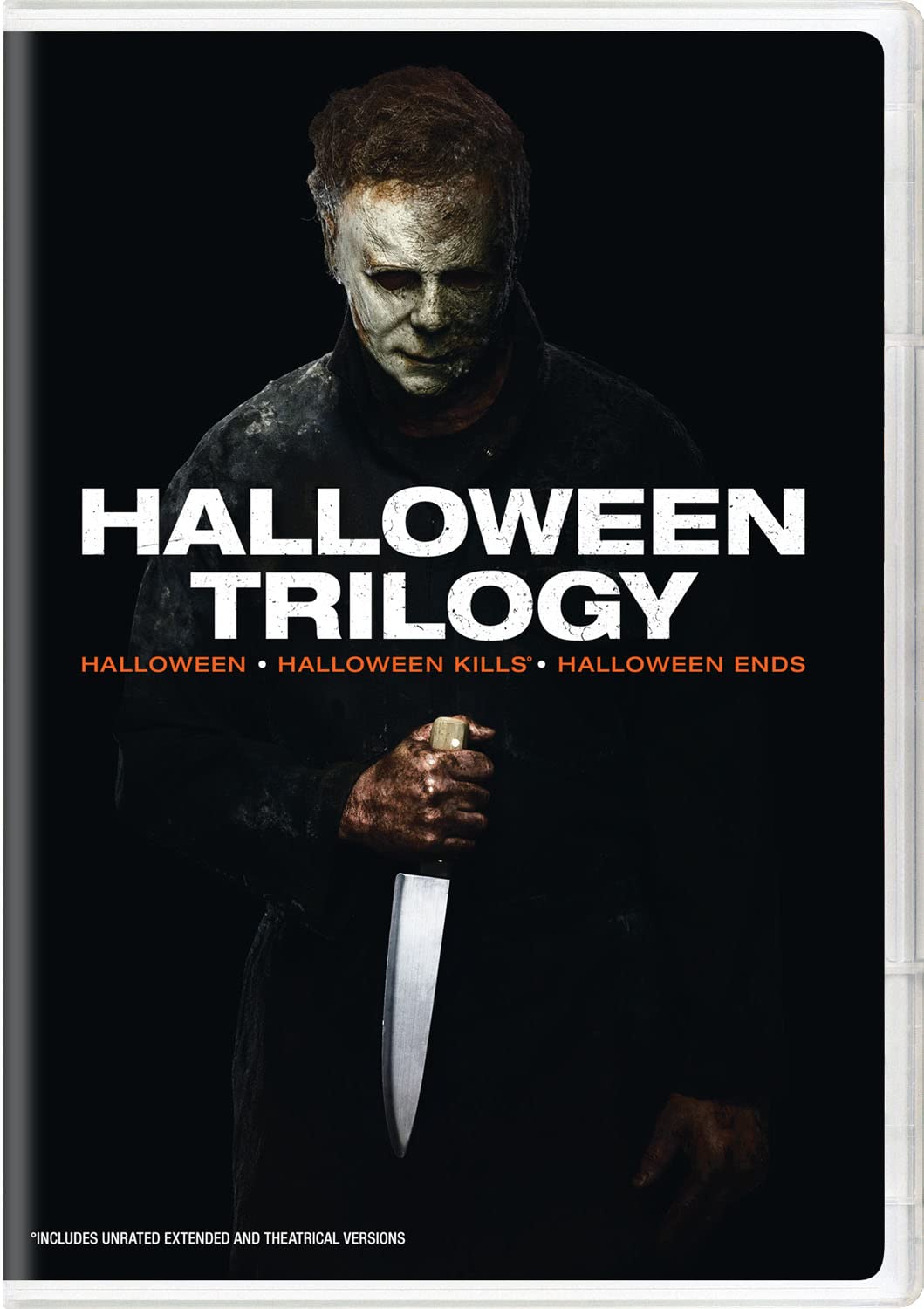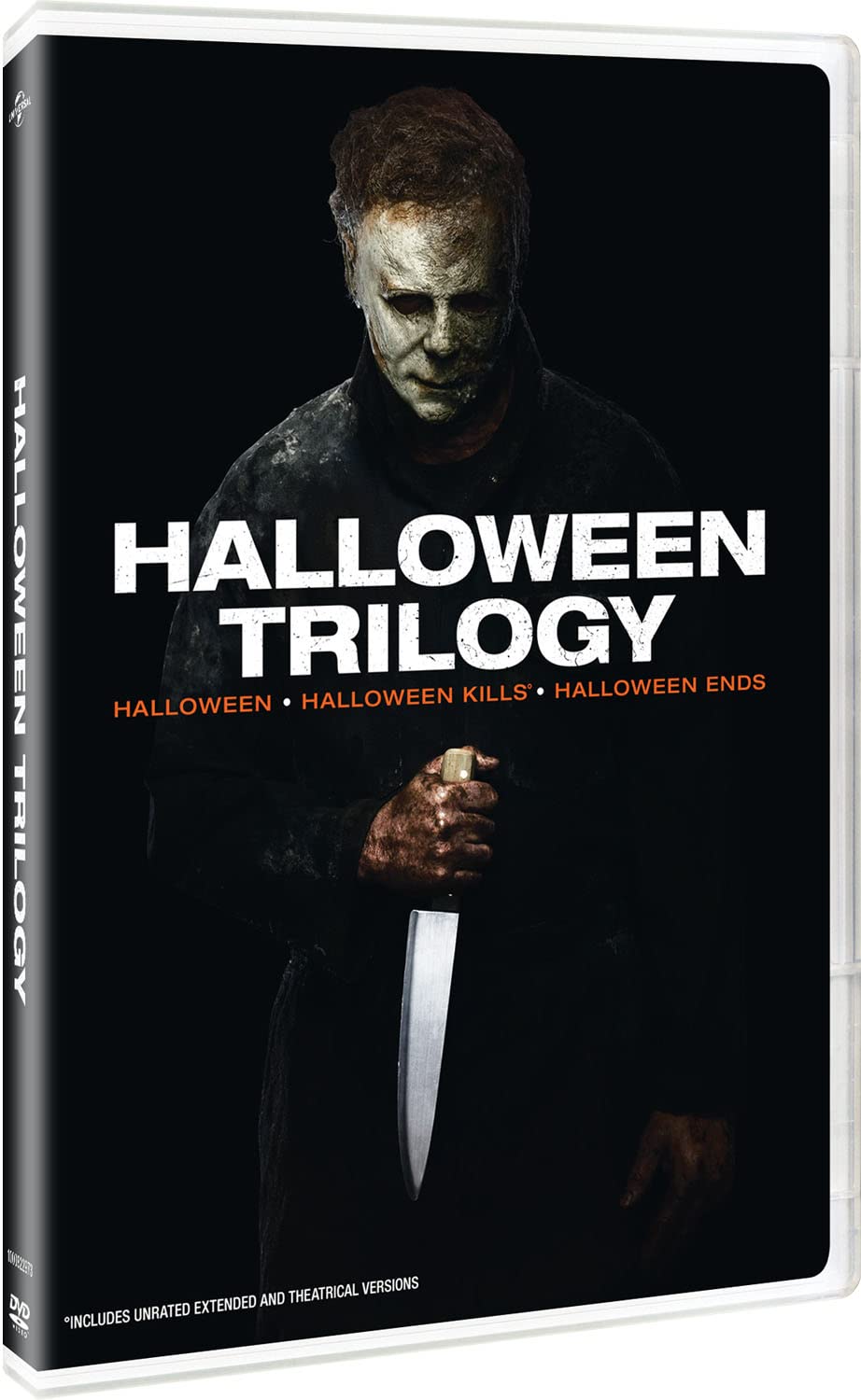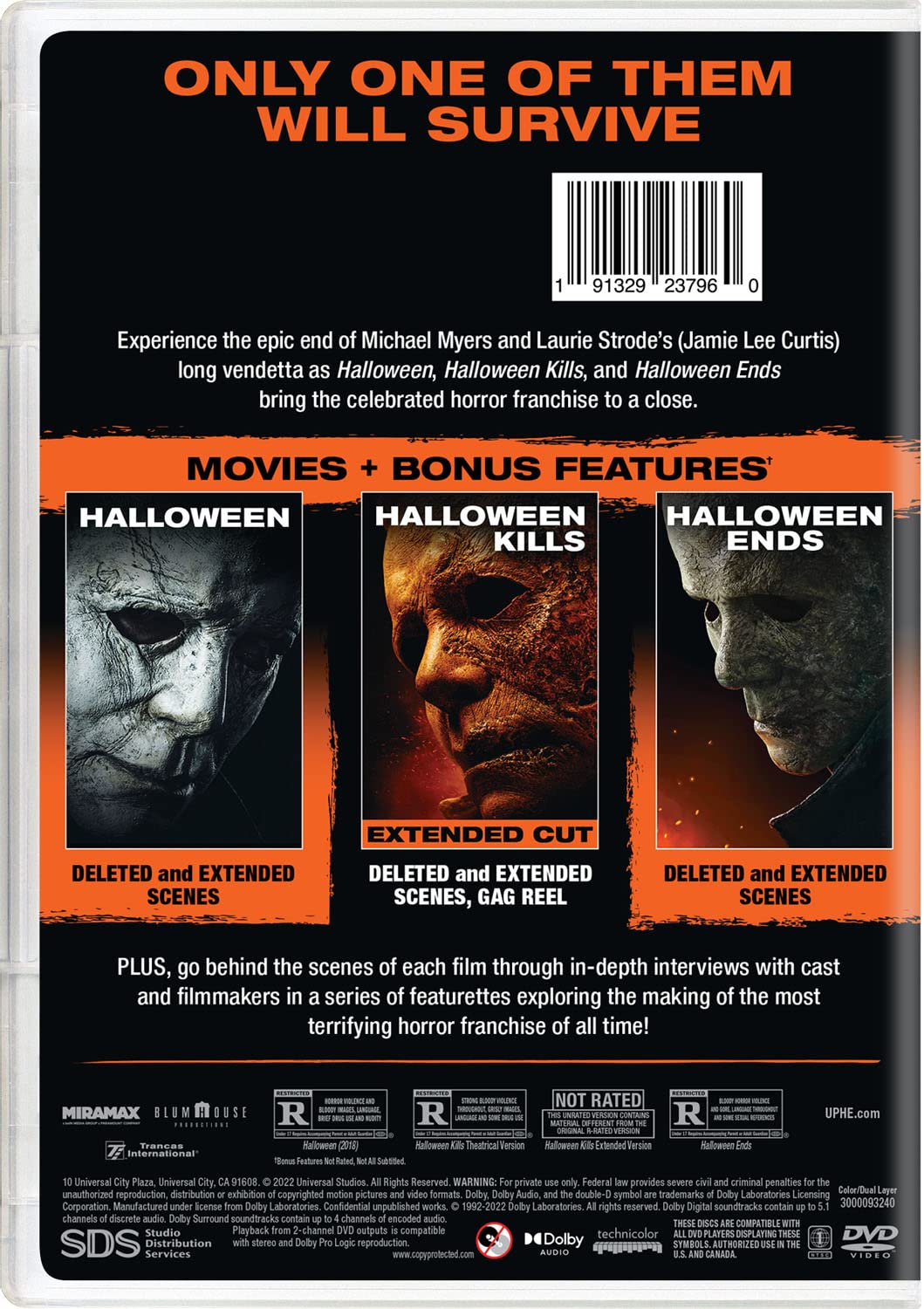
Halloween Trilogy (Halloween / Halloween Review Best Halloween Movies – Oemiu
Halloween Trilogy: A Deep Dive into the Horror Classic and its Reboots
The Halloween franchise, with its iconic villain Michael Myers and the unwavering determination of Laurie Strode, has captivated audiences for decades. What began as a low-budget independent film in 1978 has spawned numerous sequels, reboots, and remakes, creating a complex and sometimes confusing timeline. However, the original “Halloween” (1978), “Halloween II” (1981), and “Halloween 4: The Return of Michael Myers” (1988) – often unofficially referred to as a trilogy – represent a significant arc in the saga, exploring the terrifying simplicity of evil and its lasting impact on a small Illinois town. This article will dissect these three films, analyzing their strengths, weaknesses, and enduring legacy within the horror genre. We will also examine how this set of films contributes to the pantheon of Best Halloween Movies.
The Genesis of Terror: “Halloween” (1978)
John Carpenter’s “Halloween” is a masterclass in suspense and atmosphere. Its brilliance lies not in excessive gore or jump scares, but in its patient build-up of dread and the unsettling portrayal of Michael Myers as an almost supernatural force. The film opens with a chilling sequence depicting a young Michael murdering his sister on Halloween night in 1963, establishing his inherent evil from the very beginning. Fifteen years later, he escapes from Smith’s Grove Sanitarium and returns to his hometown of Haddonfield, Illinois, where he stalks Laurie Strode and her friends on Halloween night.
Carpenter’s direction is masterful in its simplicity. The use of long, unbroken takes, often from Michael’s point of view, creates a sense of unease and voyeurism. Dean Cundey’s cinematography is equally effective, utilizing shadows and darkness to heighten the suspense and obscure Michael’s movements. The iconic score, composed by Carpenter himself, is instantly recognizable and adds significantly to the film’s unsettling atmosphere. Jamie Lee Curtis’s performance as Laurie Strode is equally memorable. She portrays Laurie as a relatable and intelligent young woman who is forced to confront an unimaginable evil. Donald Pleasence delivers a commanding performance as Dr. Sam Loomis, Michael’s psychiatrist, who understands the true nature of the threat and desperately tries to warn everyone.
The film’s impact on the horror genre is undeniable. It popularized the slasher film formula, influencing countless films that followed. “Halloween” demonstrated that a horror film could be both terrifying and artistically significant, proving that effective storytelling and atmosphere are just as important as gore and special effects. It’s rightly considered one of the all-time Best Halloween Movies.
Picking Up the Pieces: “Halloween II” (1981)
“Halloween II,” directed by Rick Rosenthal, picks up immediately after the events of the first film. Laurie Strode is rushed to Haddonfield Memorial Hospital, while Dr. Loomis continues his relentless pursuit of Michael Myers. While not as groundbreaking as its predecessor, “Halloween II” expands upon the mythology of Michael Myers and Laurie Strode, revealing that they are siblings. This revelation, while controversial among some fans, adds a new layer of complexity to their relationship and provides a potential explanation for Michael’s obsession with Laurie.
The film is more violent and graphic than the original, catering to the evolving tastes of horror audiences in the early 1980s. While some argue that this detracts from the suspense and atmosphere of the first film, others appreciate the increased intensity and gore. The hospital setting provides a claustrophobic and unsettling backdrop for Michael’s rampage, and the film features several memorable kills. Donald Pleasence continues to deliver a strong performance as Dr. Loomis, and Jamie Lee Curtis effectively portrays Laurie’s growing trauma and resilience.
Despite its flaws, “Halloween II” is a solid sequel that expands upon the mythology of the original film. It maintains the suspense and atmosphere of the first film while also increasing the violence and gore. The revelation about Laurie and Michael’s sibling relationship adds a new layer of complexity to their dynamic, though it’s a plot point that has been retconned and reinterpreted in subsequent installments. Although the sibling twist divided some fans, it did not diminish the film’s status as one of the scariest Halloween movies.
A New Generation of Fear: “Halloween 4: The Return of Michael Myers” (1988)
After the divisive “Halloween III: Season of the Witch,” which abandoned the Michael Myers storyline altogether, “Halloween 4: The Return of Michael Myers” brought the iconic killer back to the screen. Set ten years after the events of “Halloween II,” the film focuses on Laurie Strode’s daughter, Jamie Lloyd (played by Danielle Harris), who is now living with a foster family after her parents’ death. Michael Myers, having been in a coma for a decade, escapes from a mental institution and returns to Haddonfield to kill his niece.
“Halloween 4” effectively re-establishes Michael Myers as a formidable and terrifying antagonist. The film returns to the suspenseful atmosphere of the original, relying less on gore and more on psychological horror. Danielle Harris delivers a standout performance as Jamie Lloyd, portraying her vulnerability and fear with remarkable maturity. Donald Pleasence continues to shine as Dr. Loomis, now even more obsessed with stopping Michael Myers.
The film introduces a new generation of characters and effectively reboots the storyline without completely disregarding the previous films. The ending, in which Jamie stabs her foster mother with scissors, mirroring Michael’s first murder, is a shocking and memorable twist. While this twist was ultimately retconned in later films, it served to raise questions about the nature of evil and whether it could be inherited. This film reminds viewers why the Halloween franchise remains on many lists of the most highly rated Halloween movies.
The plot cleverly builds upon the original’s simplicity, highlighting the cyclical nature of trauma and violence. The film’s box office success proved that audiences were still eager for more Michael Myers, solidifying the franchise’s enduring popularity. Though many sequels followed, “Halloween 4” is often seen as the strongest of the later entries in the original timeline.
Comparing the “Halloween Trilogy” Films
Each film in this unofficial “Halloween trilogy” has its own distinct qualities, contributing to the overall legacy of the franchise. The following table summarizes some of the key aspects of each film:
| Film Title | Director | Key Characteristics | Notable Strengths | Potential Weaknesses |
|---|---|---|---|---|
| Halloween (1978) | John Carpenter | Suspenseful, Atmospheric, Groundbreaking | Masterful direction, iconic score, strong performances, established the slasher film formula | Relatively low on gore compared to later slasher films |
| Halloween II (1981) | Rick Rosenthal | More violent, Expands Mythology, Hospital Setting | Continues the suspense and atmosphere, reveals Laurie and Michael’s sibling relationship, features memorable kills | More violent and graphic than the original, the sibling revelation is controversial among some fans |
| Halloween 4: The Return of Michael Myers (1988) | Dwight H. Little | Re-establishes Michael, Focuses on Jamie Lloyd, Suspenseful | Effectively reboots the storyline, Danielle Harris’s performance, returns to the suspenseful atmosphere of the original | The ending twist was ultimately retconned in later films |
While “Halloween” (1978) is widely considered the superior film due to its originality and masterful execution, “Halloween II” (1981) and “Halloween 4: The Return of Michael Myers” (1988) offer valuable contributions to the Halloween canon. “Halloween II” expands upon the mythology and increases the intensity, while “Halloween 4” successfully re-establishes Michael Myers as a terrifying antagonist and introduces a new generation of characters. This diverse and enduring appeal is a strong argument for placing these films high on any list of the greatest Halloween movies.
The Legacy of the Trilogy
The Halloween “trilogy” has had a profound and lasting impact on the horror genre and popular culture. The original film popularized the slasher film formula, inspiring countless filmmakers to create their own masked killers and teenage victims. The iconic image of Michael Myers, with his expressionless mask and relentless pursuit, has become a symbol of pure evil. The franchise’s enduring popularity is a testament to the power of its simple yet effective story.
The themes explored in the trilogy, such as the nature of evil, the impact of trauma, and the importance of family, continue to resonate with audiences today. The films also offer a commentary on the anxieties of suburban life and the vulnerability of youth. The strength of Laurie Strode’s character, in particular, helped change the paradigm of female roles in horror cinema, paving the way for strong, resourceful final girls.
Despite the numerous sequels, reboots, and remakes that have followed, the original “Halloween trilogy” remains a significant part of the franchise’s legacy. It is a testament to the power of effective storytelling, masterful direction, and iconic characters. These films stand as a reminder that sometimes the simplest stories are the most terrifying, and that the scariest monsters are the ones that lurk in the shadows. For many, the consistent quality of these films compared to later entries justifies their place among the top tier of Halloween-themed horror movies.
The consistent success of these films also shows how to create truly scary movies. It is a combination of well-written story and good actors.
FAQ
What makes the original “Halloween” (1978) so influential?
John Carpenter’s “Halloween” revolutionized the horror genre by popularizing the slasher film formula. It distinguished itself from other horror films of the time by prioritizing suspense, atmosphere, and character development over excessive gore. Carpenter’s masterful direction, Dean Cundey’s cinematography, and the iconic score all contributed to the film’s unsettling and unforgettable atmosphere. Jamie Lee Curtis’s performance as Laurie Strode also helped to establish the “final girl” trope, showcasing a strong and resourceful female protagonist who could fight back against evil. The film’s success demonstrated that a horror film could be both terrifying and artistically significant, influencing countless filmmakers and inspiring a generation of horror fans. Its simplicity and relatability tapped into primal fears, solidifying its place as a cornerstone of the horror genre.
How does “Halloween II” (1981) expand upon the original film’s mythology?
“Halloween II” picks up directly after the events of the first film, continuing the story of Michael Myers’s rampage and Laurie Strode’s struggle for survival. The film expands upon the original’s mythology by revealing that Laurie Strode is Michael Myers’s sister. This revelation adds a new layer of complexity to their relationship, suggesting a possible explanation for Michael’s obsession with Laurie. While this plot point has been retconned and reinterpreted in later installments, it initially provided a deeper connection between the two characters. The film also delves further into the character of Dr. Loomis, exploring his obsessive pursuit of Michael Myers and his growing understanding of the killer’s inherent evil. “Halloween II” also increased the level of violence and gore, catering to the evolving tastes of horror audiences in the early 1980s.
Is “Halloween III: Season of the Witch” part of the same timeline as the other “Halloween” films?
No, “Halloween III: Season of the Witch” is not part of the same timeline as the other “Halloween” films. It was intended to be the first installment in an anthology series of Halloween-themed horror films, with each film featuring a different story and set of characters. However, due to the lack of Michael Myers, the film was poorly received by fans who were expecting another slasher film. “Halloween III” features a completely different storyline involving an evil mask maker who plans to sacrifice children on Halloween night. The film is often criticized for its deviation from the traditional “Halloween” formula, but it has also gained a cult following over the years for its unique and bizarre storyline.
What makes “Halloween 4: The Return of Michael Myers” a successful sequel?
“Halloween 4: The Return of Michael Myers” is considered a successful sequel because it effectively re-establishes Michael Myers as a formidable and terrifying antagonist after his absence in “Halloween III.” The film returns to the suspenseful atmosphere of the original, relying less on gore and more on psychological horror. Danielle Harris delivers a standout performance as Jamie Lloyd, Laurie Strode’s daughter, portraying her vulnerability and fear with remarkable maturity. The film introduces a new generation of characters and effectively reboots the storyline without completely disregarding the previous films. The ending, in which Jamie stabs her foster mother with scissors, mirroring Michael’s first murder, is a shocking and memorable twist that raises questions about the nature of evil. The film’s box office success proved that audiences were still eager for more Michael Myers, solidifying the franchise’s enduring popularity.
How does the character of Dr. Loomis contribute to the “Halloween” franchise?
Dr. Sam Loomis, played by Donald Pleasence, is a crucial character in the “Halloween” franchise. As Michael Myers’s psychiatrist, he possesses a unique understanding of the killer’s inherent evil and serves as a constant voice of warning. Loomis’s unwavering determination to stop Michael Myers, often at great personal risk, adds a sense of urgency and gravitas to the films. He acts as a counterpoint to Michael’s silent and relentless evil, providing a human perspective on the horror. Loomis’s character evolves throughout the franchise, becoming increasingly obsessed with Michael Myers and ultimately sacrificing himself to stop him. His presence adds depth and complexity to the “Halloween” universe, making him one of the most memorable and important characters in the series.
What are some common criticisms of the “Halloween” sequels?
While the “Halloween” franchise has produced numerous sequels, many of them have been criticized for various reasons. Some common criticisms include: overuse of gore and violence, deviation from the suspenseful atmosphere of the original film, convoluted and inconsistent storylines, retconning of established plot points, and the diminishing returns of the Michael Myers character. Some sequels have been accused of relying too heavily on jump scares and special effects, sacrificing the psychological horror that made the original film so effective. Others have been criticized for introducing unnecessary characters and subplots, diluting the focus on Michael Myers and Laurie Strode. The inconsistent quality of the sequels has led to a fragmented timeline and a sometimes confusing mythology, frustrating some fans.
How have the “Halloween” films influenced other horror movies?
The “Halloween” films have had a profound and lasting influence on other horror movies, particularly in the slasher subgenre. The original film popularized the key elements of the slasher formula, including a masked killer stalking teenage victims, a final girl who survives the ordeal, and a suspenseful atmosphere built on suspense and anticipation. “Halloween” also established the visual language of the slasher film, with its use of long takes, POV shots, and unsettling imagery. Countless horror films that followed borrowed elements from “Halloween,” including “Friday the 13th,” “A Nightmare on Elm Street,” and “Scream.” The film’s success demonstrated the commercial viability of the slasher film, leading to a wave of similar films in the 1980s. “Halloween” also helped to elevate the status of the horror genre, proving that horror films could be both terrifying and artistically significant.



Price: $24.98 - $17.35
(as of Sep 03, 2025 06:09:09 UTC – Details)



![Scary Stories To Tell In The Dark [DVD]](https://oemiu.com/wp-content/uploads/2025/09/1757427628_Scary-Stories-To-Tell-In-The-Dark-DVD-Review-Best-336x220.jpg)
